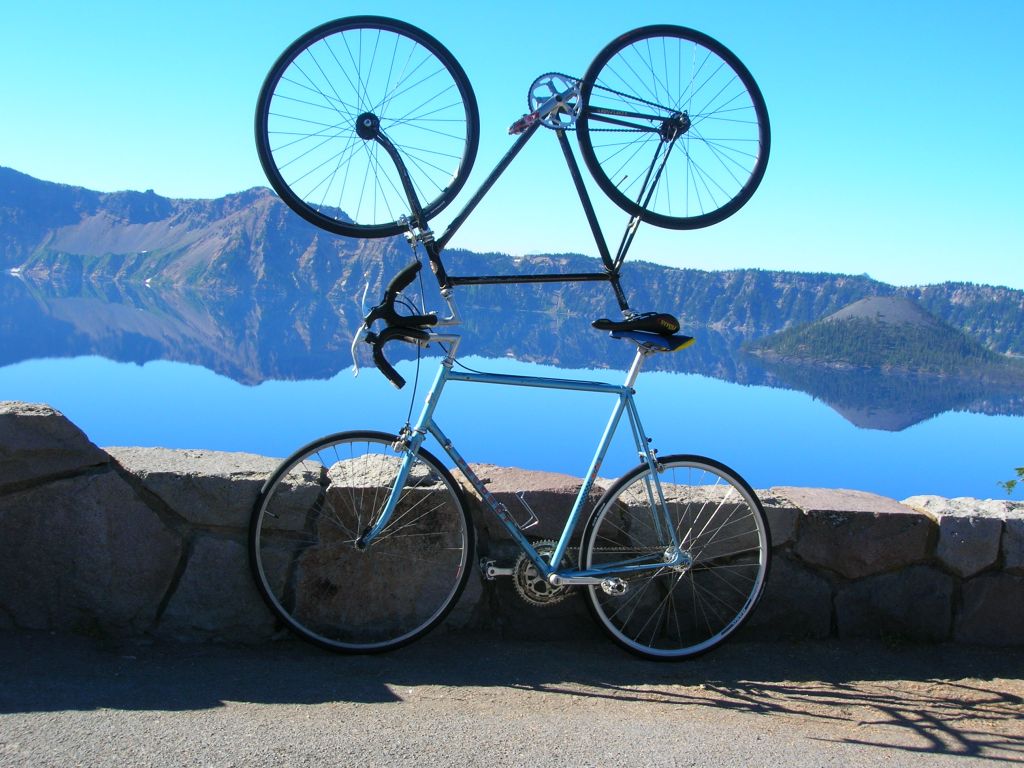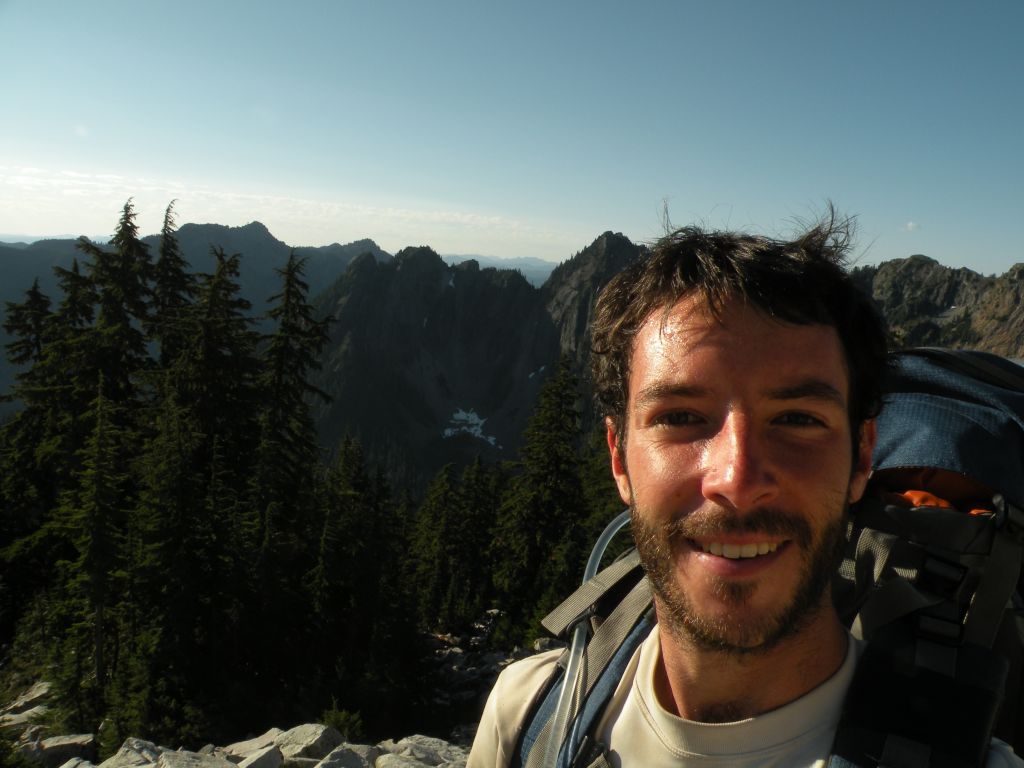City Biking
Update 2/13/2012: It looks like some folks at the Seattle Times read my blog and put together this article in response. Check it out.
Biking around a city can be a wild thing. It’s usually fun, sometimes a hassle, and occasionally just plain scary. But in Seattle, and I suspect in many other cities, it’s quite often the fastest and best way to get around. From my bike, I definitely feel good knowing that while all the cars around me are spending money on gas, getting stressed out and wasting time looking for parking, I’m just getting exercise. There are some clever signs and T-shirts about biking, my favorite probably being the one with the silhouette of a bicycle and a gas pump, then info mimicking the window plaque on a new car. Highway MPG: ∞, City MPG: ∞. Another good one: “You’re not IN traffic, you ARE traffic.”
I’ve been riding around Seattle consistently for about two years now, and this is the biggest city I’ve ever biked around regularly. It’s a whole different experience than biking around a smaller city or town. It can be stressful at times, but on the whole it’s a fun and rewarding experience. Weaving around busses, poorly parked cars, and bleary eyed pedestrians is exciting – as long as I make it to my destination in one piece. I ride a fixed gear (for those less bike-inclined, this means the pedals are directly linked to the back wheel so you always go exactly the speed you’re pedaling, times the gear ratio. On my bike one full rotation of the pedals creates about 2.93 rotations of the back wheel. To slow down, you pedal slower. You can’t coast, and if you pedal backwards, you actually go backwards. Don’t worry mom, I still keep a front brake, even though some claim it’s superfluous), which makes the riding experience very tactile. I wear a helmet and lights. Biking regularly in a city without them is pretty much a death wish. I have a quick commute to work, but it’s all on busy streets heading into downtown. There are a lot of great bike paths in Seattle, but most of my trips keep me on roads instead.
A problem with biking in a busy place is knowing that you could die at pretty much any time for a variety of reasons, many of which would not be your fault. Rather than become a timid or defensive biker, this that taught me to be aggressive and (perhaps) overly assertive on the road. My number one priority on my bike is to not die, so my theory is that if a driver can see me well enough to get pissed off at me, then they can see me well enough to not kill me. The rational behind this is that it is not going to be some enraged, steam-blowing-out-of-the-ears driver who is going to hit me. It is some unsuspecting, lazy or distracted driver who doesn’t see me. A soccer mom with kids in back, a tipsy twenty-something focusing hard on not swerving or speeding, the guy whose mirror has been broken for a month but he’s been too busy to get it fixed. There are three situations which I consider the MOST dangerous, and which would give me the least time to react:
1. The car door. This is a perpetual fear of mine, and it has most often come the closest to putting me in serious harm. The problem: people don’t check their blind spot before they open their door after parking. Especially when a car is already parked with the lights off, this gives almost no time to react. I think it’s common for people to park, sit in the car for a couple minutes checking their phone, then throw the door open without looking. The solution to this is to ride as far to the left as possible. In tough situations, this means cars won’t be able to pass, and they’ll get upset. Well, let them wait.
2. Turning right without a blinker. A lot of people don’t think they need their blinker when they turn right because it often doesn’t affect the rest of the flow of traffic. Well, especially if you make a fast turn, you might hit the biker you didn’t see. For some reason, this is a lot worse on one way streets with people turning left and the bike lane on the left. It’s a situation nobody is really used to, so they don’t know where to look. I’ve considered wearing a clown wig to increase my visibility.
3. Running a stop sign or light. This is the illegal move that worries me (U-turns are bad too, but give more time to react), mostly because I’ve heard stories; it leads to some of the worst crashes. I definitely cover my brake whenever I’m going through an intersection, and get as much visibility to side streets even when I have the right of way, but there’s only so much you can do.
I haven’t had any accidents in Seattle in my first few hundred miles of biking around the city, and I’m hoping not to anytime soon. I try to anticipate poor driving decisions, and I think riding my fixie makes me more alert (plus I go slower down hills). A lot of my friends have had wrecks, and you definitely can’t anticipate everything. There’s all sorts of questionable and dangerous maneuvers cars make around town, so you’ve got to stay on your toes. To be fair, I suppose I should mention some of the questions things I do that probably upset drivers.
1. Swerve through traffic. This is what makes riding on busy streets fun and fast – ignoring the traffic. I ride between lanes (but try to stay on the right when it’s open), and swerve around cars that pop into the bike lane to turn instead of stopping behind them. This makes biking about twice as fast as taking the bus for most trips. Also, most Seattle drivers are push-overs, so nobody seems to care that I’m in and out of their lanes.
2. Ride in the middle of the lane. As mentioned above, I do this when it’s not safe to be anywhere else. Sometimes it means the cars will have to wait, and sometimes that makes them upset.
3. Mess with aggressive drivers. Ok, I admit to occasionally intentionally making some driver’s day a little bit worse. Biking a lot can cultivate a sense of righteous indignation – you know what you’re doing is better than what those people are doing, and they should know too. So, if someone revs up as they’re speeding past me with <1 ft clearance, or if someone honks (this is the worst. Without the glass and steel cocoon it’s a lot louder than they think), or if someone passes me carelessly only so they can cut me off and get to a line of stopped cars first, sometimes I’ll indulge my momentary road rage. Some of my favorites are pulling in front of someone at a light and leisurely getting my feet to the pedals as the light changes, and riding really close to someone and maybe giving their window a little slap to wake them up. On bad days, after getting cut off for about the fourth or fifth time, I sometimes dream of pulling out my bike lock and seeing how hard I’d have to swing it to break a window, or how deep a dent I could make in a hood. So far, it hasn’t come to that.
Knowing what’s out there and what is dangerous definitely forms a lot of my biking decisions, but there can always be something left unaccounted for, some surprise or freak occurrence. On the whole, Seattle drivers are very accommodating to bikers, and I generally feel safe. There are some jerks and idiots out there, though, and in the dark and rain it can be hard even to see a well-lit bike. Sometimes you just have to hope you make it where you’re going, and when it’s really bad, sometimes you just have to take the bus.


